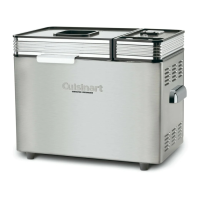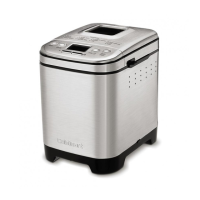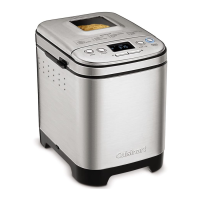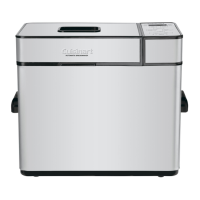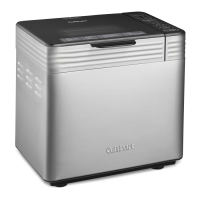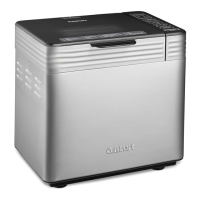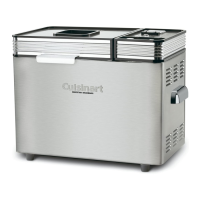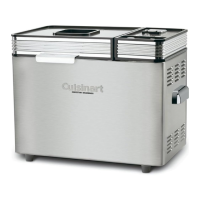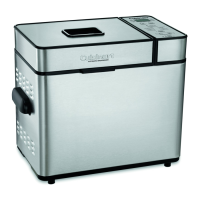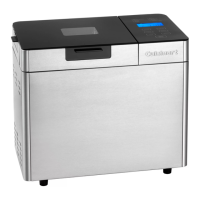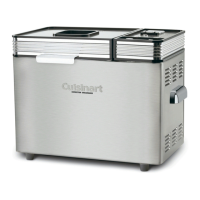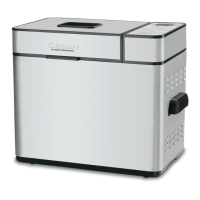13
pasta noodles into nests and dust lightly with flour to keep
strands from sticking together.
Tips for Cooking and Storing Pasta Noodles
• After extruding, cook pasta immediately or store it in the
refrigerator for up to 2 days. Uncooked pasta may be frozen
for up to 3 weeks – place the sheet pan of cut pasta noodles
in the freezer until semi-frozen, then transfer to freezer bags.
• Cook pasta in a large pot of boiling, salted water to desired
doneness. The cooking time for pasta will differ slightly
between recipes and the disc shape used. Refer to the
Pasta Chart for recommended cooking times.
Tips for Rice Noodles
• When choosing a rice flour to make rice noodles, look for
varieties labeled “superfine.”
• Rice flour is naturally gluten-free and therefore requires
binding agents, such as tapioca flour and xanthan gum for
making noodles.
• During mixing, water should be added sparingly, as the rice
noodle dough can quickly turn into a paste if too much water
is added – this will prevent the dough from entering the auger
for extrusion.
• Transferring cooked rice noodles immediately to an ice bath
will halt cooking and keep noodles from sticking together.
Rinse cooked noodles thoroughly in cold water to remove
excess starches.
Tips for Bread Dough Kneading
• The dough kneading function will yield a smooth, elastic
dough ball. In some instances, an extra dough kneading cycle
is required for optimal results.
• Use a small silicone spatula to assist when adding proofed
yeast through the opening in the lid.
• Most dough recipes require more than 1 cup of liquid; use a
2-cup liquid measuring cup for proofing yeast and combining
liquid ingredients.
• It is recommended to add the liquid ingredients in a
“zigzagging” motion in order to evenly distribute the liquid into
the dry ingredients.
• Add the liquid slowly but steadily to the mixing bowl through
the lid until the liquid is absorbed by the flour. Reserve a small
amount of the liquid. Should the dough seem dry, add all of
the liquid.
• If dough is too sticky, add additional flour, a tablespoon at a
time while kneading.
• During the winter or drier months, the amount of water may
need to be increased. During the warmer or more humid
months, the amount of water may need to be reduced
• Be sure to spoon flour, rather than dip the measuring cup
into the flour. Fill the cup over the top and then level off with
a straight edge.
• Butter that is not melted should be added with the dry
ingredients. Cut into small cubes and bring to room
temperature before adding.

